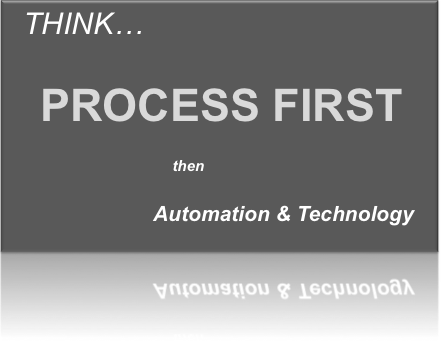 As I was relaxing over the weekend watching the ATT Pro-Am, where more than a few players (and celebs) entered the final day well within contention. There are many golfers that are entering 2011 in good form for so early in the year, and while there was only one winner, there were at least a dozen players (from the 40-somethings like Phil and VJ to the cadre of “young guns” that appear to have come out of nowhere and are now taking center stage) within striking distance when the day started on Sunday.
As I was relaxing over the weekend watching the ATT Pro-Am, where more than a few players (and celebs) entered the final day well within contention. There are many golfers that are entering 2011 in good form for so early in the year, and while there was only one winner, there were at least a dozen players (from the 40-somethings like Phil and VJ to the cadre of “young guns” that appear to have come out of nowhere and are now taking center stage) within striking distance when the day started on Sunday.
As it turned out, the winning team was in fact one of those young guns(D.A. Points), who ironically stood beside his celebrity playing partner- not other than the “old fart” we all remember from caddy shack, Mr Bill Murray himself. And what a finish it was.
But what was interesting about this day was that there were so many guys playing great golf, and who had clearly taken there game to the next level. It was kind of odd listening to the Mickelson (after mucking up a few key holes that likely cost him a come from behind win), describe the tournament as “really fun” and his play as “much improved”. Sure, anyone making tens of millions a year could probably maintain that attitudeafter “letting one slip away”. But I actually watched that interview thinking the guy was genuine. In my view, good athletes get where are not only through hard work and unwavering commitment, but also by recognizing and reinforcing the principle of improvement as much as they do the actual win.

As you read the below post, I encourage you to think about how you can apply this principle to your periodic goal setting process, whether its setting new goals or negotiating mid course corrections. I hope you enjoy what I believe is some pretty timeless advice.
—————————
From my previous post “PROGRESS, NOT PERFECTION”…
Good performance managers can separate the “aspiration” from the “journey” toward it. Notice I said “toward it”, and not “to it”. Performance Management is a process, not and end game. It’s a journey “toward” a state of perfection, knowing that you may never fully achieve it. It’s working damn hard at something knowing that you never really graduate or declare a perfect ending. There’s always something else to aspire to. Our job as performance managers is to manage the process or the journey, using the “end game” only as a beacon that you navigate toward.
To some of you, this may contradict one of my earlier writings on ‘not accepting mediocrity’. In fact, there is a contradiction, and it’s by design. Goal setting is an art, always trying to find the balance between being too ambitious, but at the same time, not accepting mediocrity. Good goal setting will stretch the capabilities of the individual without demoralizing them with repeated failure. For example, an organization may aspire to six sigma performance standards, but manage the process in a way that reinforces and rewards milestones along the way. And when you’re at six sigma, there’s still something to aspire to.
Think about the game of golf. Hogan once said that man will never play a perfect round of golf, because of the nature of the game. Think about it. A perfect score of 18 is beyond human reach in the game as we know it (a hole in one on every hole). Hogan also said that when he plays a round of golf, he can expect only a handful of shots to go exactly as he planned them. Wow! Now that’s amazing. Here’s a world class golfer at his peak saying that out of 65-75 strokes, only 4 or 5 will pass his test of perfection.
But despite the fact that we’ll never achieve that perfect end state, the game of golf does challenge us with goals of par (what should a good golfer shoot), birdies, eagles, double eagles, and those rare but attainable hole in ones. The game’s scoring is also adjusted for a player’s handicap, which changes as his skill improves. There are not many sports that encourage and motivate players ‘toward’ a level of perfection, without ever fully achieving it, than the game of golf does.
So sticking with this analogy, how do golfers motivate themselves in a world where they’ll never fully achieve “perfection”? Most good golfers play each stroke, one at a time, putting a lot more focus on # of fairways hit, GIR’s (# greens hit in regulation), # of sand saves, # of up and downs, and average # of putts per green. That’s how they do it. They set meaningful and achievable milestones for the journey, knowing that if they achieve those, the final score will take care of itself. Turn on the TV every Sunday afternoon, and you’ll see it in action. Even if you don’t like golf, you can’t help but being impressed by how these guys and women manage their game (their journey).

If you like the above analogies and can relate to them, there are some great writings on the subject that will illustrate this point better than I ever could. Three that I recommend are “Golf is not a game of perfect”, “Life is not a game of perfect”, and “The golf of your dreams”, all written by Dr. Bob Rotella, a noted sports psychologist. While these may play more to the golfers among us, his style of writing lends itself to wide applications of these principles, from the workplace to life in general.
So as you set goals, and manage your people toward achieving them, remember to not only focus on the ‘end game’ or ultimate aspiration of perfection, but to also place an equal if not greater focus on the journey and the milestones we must achieve along the way.
-b
Author: Bob Champagne is Managing Partner of onVector Consulting Group, a privately held international management consulting organization specializing in the design and deployment of Performance Management tools, systems, and solutions. Bob has over 25 years of Performance Management experience and has consulted with hundreds of companies across numerous industries and geographies. Bob can be contacted at bob.champagne@onvectorconsulting.com


 Here’s a brief story I encountered while leaving Newark International Airport following a recent business trip. Hard to believe, but true.
Here’s a brief story I encountered while leaving Newark International Airport following a recent business trip. Hard to believe, but true.
